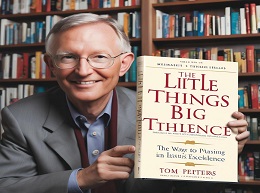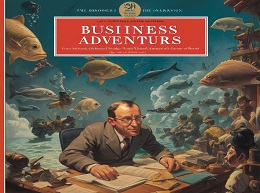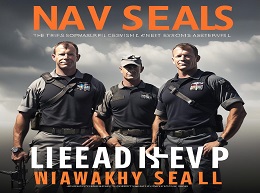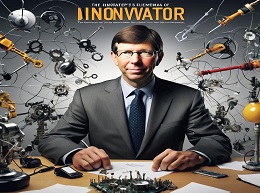The Wisdom of Failure: How to Learn the Tough Leadership Lessons Without Paying the Price
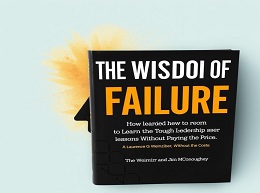
The Wisdom of Failure: Leadership Lessons Without the Cost
"The Wisdom of Failure: How to Learn the Tough Leadership Lessons Without Paying the Price" by Laurence G. Weinzimmer and Jim McConoughey is an insightful exploration into the often-overlooked aspects of leadership: the failures. This book offers a unique perspective, emphasizing that understanding and learning from failure is as crucial to leadership as celebrating success. Through an array of case studies, practical advice, and actionable insights, Weinzimmer and McConoughey guide leaders on how to glean wisdom from failures both their own and those of others.
The Stigma of Failure
Traditionally, failure has been stigmatized, especially in leadership. Leaders are often expected to have all the answers, and admitting failure can seem like admitting incompetence. However, "The Wisdom of Failure" challenges this notion by arguing that failure is an integral part of the learning process. Weinzimmer and McConoughey illustrate that leaders who embrace and analyze their failures are better equipped to avoid repeating mistakes and can achieve greater long-term success.
Example: Thomas Edison’s Inventions
The book references Thomas Edison, who famously said, "I have not failed. I've just found 10,000 ways that won't work." Edison’s perspective on failure as a step towards success exemplifies the core message of the book: failure is not the end but a valuable part of the journey.
Identifying Common Leadership Failures
Weinzimmer and McConoughey categorize common leadership failures into several themes, providing a framework for understanding and preventing these mistakes.
Overconfidence and Hubris
One prevalent theme is the danger of overconfidence. Leaders who are overly confident may ignore valuable feedback, take unnecessary risks, and fail to prepare for potential setbacks.
Case Study: Kodak
Kodak serves as a case study of overconfidence leading to failure. Despite being a pioneer in the photography industry, Kodak was slow to embrace digital technology, believing their dominance in film would continue. This hubris led to their downfall as digital photography overtook the market.
Communication Breakdowns
Another critical theme is the importance of effective communication. Leaders who fail to communicate clearly and listen to their teams can create confusion, lower morale, and miss out on innovative ideas.
Practical Insight: Transparent Communication
The authors advocate for transparent communication practices. For example, regular team meetings, open-door policies, and active listening can help leaders stay connected with their teams and foster a culture of openness.
Learning from Failure: Strategies and Techniques
The book outlines several strategies for learning from failure without experiencing it firsthand.
Benchmarking and Best Practices
One effective strategy is benchmarking studying the successes and failures of other organizations to identify best practices. By learning from the experiences of others, leaders can avoid similar pitfalls.
Example: Southwest Airlines
Southwest Airlines is highlighted for its ability to learn from both internal and external failures. By continuously analyzing and adapting its business model based on industry trends and competitor failures, Southwest has maintained a competitive edge.
Reflective Practice
Weinzimmer and McConoughey emphasize the importance of reflective practice—regularly analyzing one's own experiences to identify lessons learned. This practice encourages leaders to critically assess their actions and outcomes, fostering continuous improvement.
Practical Insight: After-Action Reviews
After-action reviews (AARs) are a practical tool for reflective practice. Originating from the military, AARs involve evaluating what went well, what didn’t, and how processes can be improved in the future. This structured reflection can help leaders and teams learn from their experiences systematically.
Encouraging Risk-Taking
Creating an environment where risk-taking is encouraged and failure is viewed as a learning opportunity is essential for innovation and growth. The authors suggest that leaders should model this behavior by sharing their own failures and the lessons learned.
Example: Google’s “Moonshots”
Google’s “moonshot” projects, like the development of self-driving cars and internet-beaming balloons, demonstrate a culture that encourages bold risks. While not all moonshots succeed, the willingness to pursue ambitious goals fosters a culture of innovation and resilience.
Fostering Psychological Safety
Psychological safety where team members feel safe to take risks and voice their opinions without fear of retribution is crucial for a learning culture. Leaders play a pivotal role in establishing this environment by being approachable, valuing diverse perspectives, and responding constructively to mistakes.
Practical Insight: Team Dynamics
Weinzimmer and McConoughey suggest practical steps for fostering psychological safety, such as encouraging open dialogue, recognizing and rewarding efforts, and addressing failures without assigning blame. These practices help build trust and encourage a growth mindset within teams.
Adaptive Leadership
Adaptive leadership, the ability to navigate complex and changing environments, is a recurring theme in "The Wisdom of Failure." Leaders who are adaptable can pivot in response to failures, leveraging them as opportunities for growth.
Case Study: IBM’s Transformation
IBM’s transformation from a hardware company to a leader in software and consulting services is a testament to adaptive leadership. By recognizing the need to change and successfully navigating this shift, IBM avoided the fate of many other tech giants that failed to adapt.
Resilience and Persistence
Resilience the ability to recover from setbacks and persistence are essential traits for leaders. The book emphasizes that resilient leaders can maintain their vision and motivate their teams even in the face of failures.
Example: J.K. Rowling
J.K. Rowling’s journey to success is an inspiring example of resilience. Despite numerous rejections from publishers, she persisted with her vision for the Harry Potter series, which eventually became a global phenomenon.
Developing a Personal Failure Log
Weinzimmer and McConoughey recommend that leaders maintain a personal failure log—a record of failures and the lessons learned from them. This practice helps in tracking progress, identifying patterns, and reinforcing a learning mindset.
Practical Insight: Continuous Learning
By regularly updating and reviewing their failure log, leaders can cultivate a habit of continuous learning and improvement. This tool serves as a personal roadmap for avoiding past mistakes and making informed decisions.
Integrating Failure into Organizational Learning
Organizations should integrate the lessons from failures into their learning and development programs. By incorporating case studies, reflective exercises, and discussions about failures, companies can build a more resilient and innovative workforce.
Example: Toyota’s Kaizen Philosophy
Toyota’s Kaizen philosophy, which focuses on continuous improvement and learning from mistakes, is an exemplary model. By encouraging employees at all levels to identify and address inefficiencies, Toyota has created a culture of constant innovation and improvement.
The Wisdom of Failure in Leadership
"The Wisdom of Failure" offers a refreshing and valuable perspective on leadership. By acknowledging and embracing failure as a vital component of the learning process, leaders can foster a culture of resilience, innovation, and continuous improvement. Weinzimmer and McConoughey’s practical insights and real-world examples provide a roadmap for turning failures into opportunities for growth.


